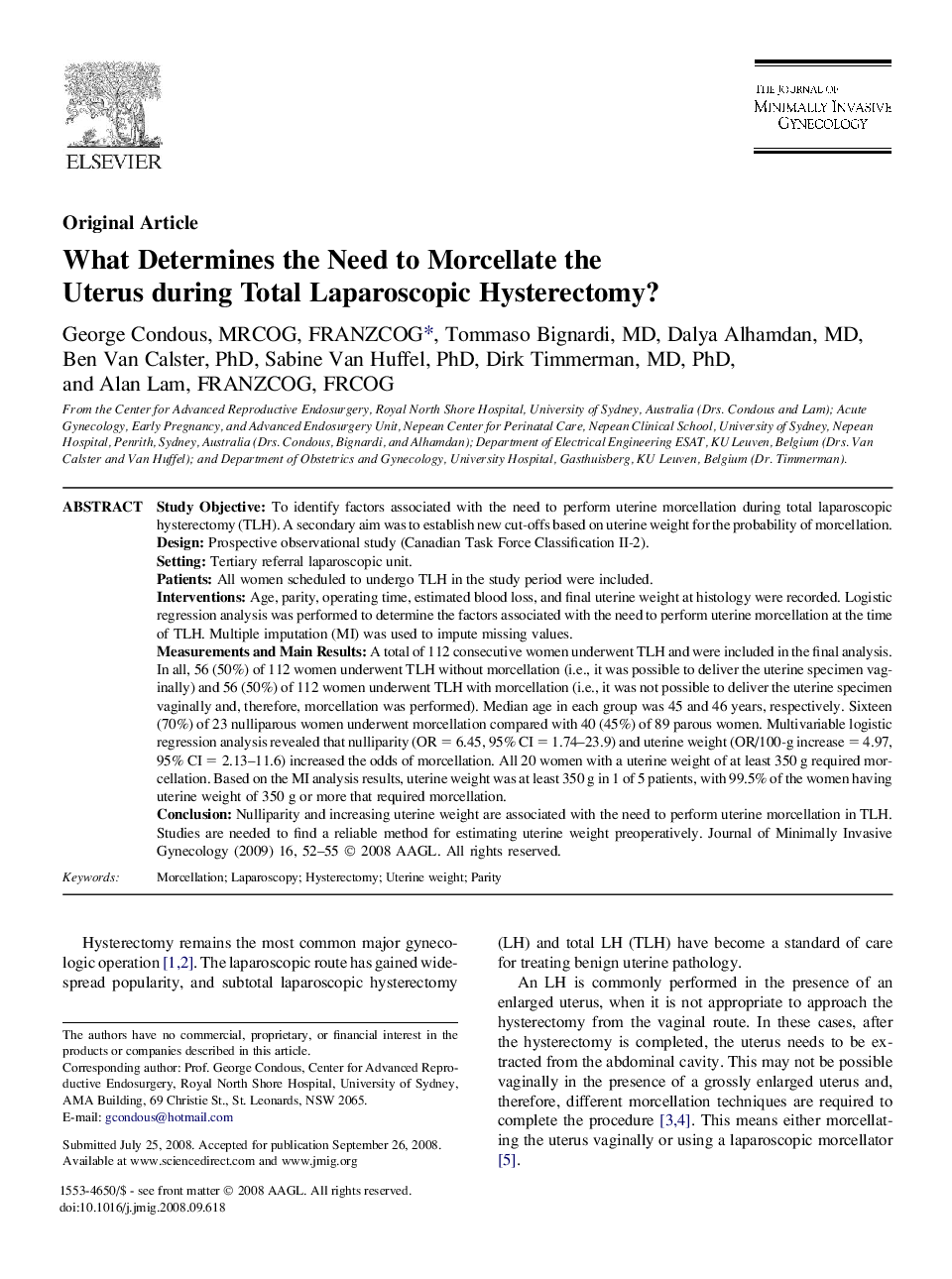| Article ID | Journal | Published Year | Pages | File Type |
|---|---|---|---|---|
| 3957259 | Journal of Minimally Invasive Gynecology | 2009 | 4 Pages |
Study ObjectiveTo identify factors associated with the need to perform uterine morcellation during total laparoscopic hysterectomy (TLH). A secondary aim was to establish new cut-offs based on uterine weight for the probability of morcellation.DesignProspective observational study (Canadian Task Force Classification II-2).SettingTertiary referral laparoscopic unit.PatientsAll women scheduled to undergo TLH in the study period were included.InterventionsAge, parity, operating time, estimated blood loss, and final uterine weight at histology were recorded. Logistic regression analysis was performed to determine the factors associated with the need to perform uterine morcellation at the time of TLH. Multiple imputation (MI) was used to impute missing values.Measurements and Main ResultsA total of 112 consecutive women underwent TLH and were included in the final analysis. In all, 56 (50%) of 112 women underwent TLH without morcellation (i.e., it was possible to deliver the uterine specimen vaginally) and 56 (50%) of 112 women underwent TLH with morcellation (i.e., it was not possible to deliver the uterine specimen vaginally and, therefore, morcellation was performed). Median age in each group was 45 and 46 years, respectively. Sixteen (70%) of 23 nulliparous women underwent morcellation compared with 40 (45%) of 89 parous women. Multivariable logistic regression analysis revealed that nulliparity (OR = 6.45, 95% CI = 1.74–23.9) and uterine weight (OR/100-g increase = 4.97, 95% CI = 2.13–11.6) increased the odds of morcellation. All 20 women with a uterine weight of at least 350 g required morcellation. Based on the MI analysis results, uterine weight was at least 350 g in 1 of 5 patients, with 99.5% of the women having uterine weight of 350 g or more that required morcellation.ConclusionNulliparity and increasing uterine weight are associated with the need to perform uterine morcellation in TLH. Studies are needed to find a reliable method for estimating uterine weight preoperatively.
